Classics and Archaeology
2020
Davis, Brent and Laffineur, Robert (eds.,). NEOTEROS: Studies in Bronze Age Aegean Art and Archaeology in Honor of Professor John G. Younger on the Occasion of His Retirement [Aegaeum 44]. Peeters Publishers, 2020.
Davis, Brent and Valerio, Miguel. “Names and Designations of People in Linear A: A Contextual Study of Tablets HT 85 and 117,” in Davis, Brent and Laffineur, Robert (eds.,). NEOTEROS: Studies in Bronze Age Aegean Art and Archaeology in Honor of Professor John G. Younger on the Occasion of His Retirement [Aegaeum 44]. Peeters Publishers, 2020.
Beginning his academic career in Classical Studies, John G. Younger rapidly extended his expertise into prehistoric (Bronze Age) Aegean archaeology, art and architecture, with a particular focus on ancient stone-working... and from this interest came his seminal studies on the iconography of Bronze Age Aegean stone seals, a field on which he has made an indelible mark. He also branched out into Jewish Studies, becoming an expert on early synagogues. His lifelong activism for LGBTQI+ and minority rights, and his early embrace of feminism and the crucial role that women have played in the past (not just in archaeology, but in the ancient world itself) have also informed his teaching and studies regarding ancient and modern notions about gender and sexuality, and these studies have greatly enriched our views of the ancient world, while going a long way toward counteracting the persistently male-centric interpretations of the ancient world characteristic of the past few centuries. He has been a pioneer in the establishment of LGBTQI+ academic programs in the U.S., and in the integration of modern technologies (especially computers) into Classics and archaeology. More information...
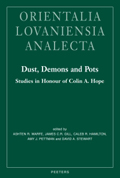
Jamieson, Andrew. “The Egyptian branch of the Classical Association of Victoria and the development of Egyptology in Melbourne,” in Warfe, A. R. et al (eds.,). Dust, Demons and Pots: Studies in Honour of Colin A. Hope. Peeters Publishers, 2020.
This volume brings together fifty-four studies on ancient Egypt and its interconnections with neighbouring regions to celebrate the career of Colin Hope. Presented by friends, colleagues and former students, contributions to the volume offer original research and fieldwork discoveries informed by new interpretations and insights on contemporary issues in Egyptology. In recognition of Colin Hope's extensive research interests, the subjects of discussion are wide-ranging in their exploration of the art, archaeology, language and literature of Egypt from prehistory to the pharaonic period, the Roman period and later. Also included are studies on the reception of Egyptology and discussions on museum collections and material conservation. A feature of the volume is the range of studies that come from contexts within the Nile Valley proper and the desert regions beyond. Together, the contrasting perspectives reflect important directions in an ever-expanding discipline and in the long-standing contributions made to it by Colin Hope.
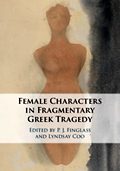
Kim, James H. and Chong-Gossard, James. “Female Agency in Euripides’ Hypsipyle,” in Finglass, P. J. and Coo, Lyndsay (eds.,). Female Characters in Fragmentary Greek Tragedy. Cambridge University Press, 2020.
How were women represented in Greek tragedy? This question lies at the heart of much modern scholarship on ancient drama, yet it has typically been approached using evidence drawn only from the thirty-two tragedies that survive complete – neglecting tragic fragments, especially those recently discovered and often very substantial fragmentary papyri from plays that had been thought lost. Drawing on the latest research on both gender in tragedy and on tragic fragments, the essays in this volume examine this question from a fresh perspective, shedding light on important mythological characters such as Pasiphae, Hypsipyle, and Europa, on themes such as violence, sisterhood, vengeance, and sex, and on the methodology of a discipline which needs to take fragmentary evidence to heart in order to gain a fuller understanding of ancient tragedy. All Greek is translated to ensure wide accessibility. More information...
2019
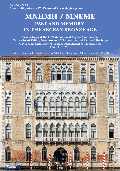
Davis, Brent; Banou, Emilia; Hitchcock, Louise and Chapin, Anne. "Curation in the Bronze Age Aegean: Objects as Material Memories," in Borgna, E., Caloi, I., Carinci, F.M., Laffineur, R. (eds.,). MNHMH / MNEME: Past and Memory in the Aegean Bronze Age. Peeters Publishers, 2019.
Heywood, J. and Davis, Brent. "Painted Larnakes of the Late Minoan III Period: Funerary Iconography and the Stimulation of Memory," in Borgna, E., Caloi, I., Carinci, F.M., Laffineur, R. (eds.,). MNHMH / MNEME: Past and Memory in the Aegean Bronze Age. Peeters Publishers
Hitchcock, Louise; Maeir, A.M. and Harris-Schober, M. "Tomorrow never dies: Post-palatial memories of the aegean late bronze age in the Mediterranean," in Borgna, E., Caloi, I., Carinci, F.M., Laffineur, R. (eds.,). MNHMH / MNEME: Past and Memory in the Aegean Bronze Age. Peeters Publishers, 2019.
The 17th International Aegean Conference / Rencontre égéenne internationale MNEME was organised by the University of Udine, Department of Humanities and Cultural Heritage, and the Ca' Foscari University of Venice, Department of Humanities, starting from the many suggestions given by several studies which have been recently devoted to the perception of and confrontation with the past in ancient societies as well as to the manifold practices of memory including memorialising and memory keeping. More information...
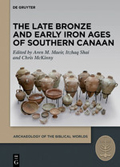
Hitchcock, Louise et al. "The Late Bronze Age at Tell es-Safi/Gath and the site’s role in Southwestern Canaan," in Maeir, Aren M., Shai, Itzhaq and McKinny, Chris (eds.,). The Late Bronze and Early Iron Ages of Southern Canaan. De Gruyter, 2019
The fourteen papers in this volume represent the proceedings of a conference held at Bar-Ilan University in 2014 (with the additional of several invited papers not presented at the conference), which provide both overviews of Late Bronze Age finds from several important sites in Israel and surrounding countries, as well as several synthetic studies on the various issues relating to the period. These papers, by and large, represent a broad view of cutting edge research in the archaeology of the ancient Levant in general, and on the Late Bronze Age specifically. More information...
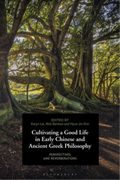
Lai, Karyn, Benitez, Rick and Kim, Hyun Jin (eds.,). Cultivating a Good Life in Early Chinese and Ancient Greek Philosophy: Perspectives and Reverberations. Bloomsbury Publishing, 2019.
This book engages in cross-tradition scholarship, investigating the processes associated with cultivating or nurturing the self in order to live good lives. Both Ancient Chinese and Greek philosophers provide accounts of the life lived well: a Confucian junzi, a Daoist sage and a Greek phronimos. By focusing on the processes rather than the aims of cultivating a good life, an international team of scholars investigate how a person develops and practices a way of life especially in these two traditions. More information...
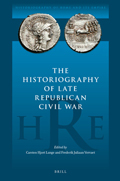
Lange, Carsten Hjort and Vervaet, Frank. The Historiography of Late Republican Civil War. Brill, 2019.
The Historiography of Late Republican Civil War is part of a burgeoning new trend that focuses on the great impact of stasis and civil war on Roman society. This volume specifically concentrates on the Late Republic, a transformative period marked by social and political violence, stasis, factional strife, and civil war. Its constitutive chapters closely study developments and discussions concerning the concept of civil war in the late republican and early imperial historiography of the late Republic, from L. Cornelius Sulla Felix to the Severan dynasty. More information...
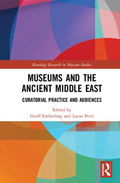
Van de Ven, Annelies and Jamieson, Andrew. "Beyond display Curriculum and community engagement with ancient Middle Eastern collections in a university museum," in Emberling, Geoff and Petit, Lucas P. (eds.,). Museums and the Ancient Middle East: Curatorial Practice and Audiences. Routledge, 2019
Museums and the Ancient Middle East is the first book to focus on contemporary exhibit practice in museums that present the ancient Middle East. Bringing together the latest thinking from a diverse and international group of leading curators, the book presents the views of those working in one particular community of practice: the art, archaeology, and history of the ancient Middle East. Drawing upon a remarkable group of case studies from many of the world's leading museums, including the British Museum, the Louvre, the Metropolitan Museum of Art, the Ashmolean Museum, and the Vorderasiatisches Museum in Berlin, this volume describes the tangible actions curators have taken to present a previously unseen side of the Middle East region and its history. More information...
2018
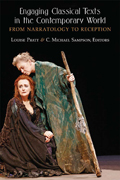
Chong-Gossard, K.O. and Ng, Lin Li. "Euripidean women and internalized misogyny: Agones in Troades, Electra, and Andromache," in Pratt, Louise and Sampson, C. Michael (eds.,). Engaging Classical Texts in the Contemporary World: From Narratology to Reception. University of Michigan Press, 2018
Contemporary classicists often find themselves advocating for the value and relevance of Greco-Roman literature and culture, whether in the classroom, or social media, or newsprint and magazines. In this collection, twelve top scholars apply major critical approaches from other academic fields to open new channels for dialogue between ancient texts and the contemporary world. This volume considers perennial favourites of classical literature - the Iliad and Odyssey, Greek tragedy, Roman comedy, the Argonautica, and Ovid's Metamorphoses - and their influence on popular entertainment from Shakespeare's plays to Hollywood's toga films. More information...
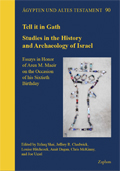
Shai, Itzick; Chadwick, Jeffrey; Dagan, Amit; McKinny, Chris; Uziel, Joe and Hitchcock, Louise (eds.,). Tell it in Gath Studies in the History and Archaeology of Israel Essays in Honor of Aren M. Maeir on the Occasion of his Sixtieth Birthday. Zaphon, 2018. More information...
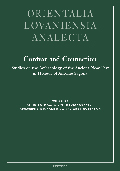
Jamieson, Andrew. "Long-stemmed vessels in the Euphrates River valley and evidence from an Early Bronze Age burial at Tell Qumluq, north Syria," in Batmaz A., Bedianashvili G., Michalewicz A. and Robinson A. (eds.,). Context and Connection: Studies on the Archaeology of the Ancient Near East in Honour of Antonion Sagona. Peeters-Leuven, 2018
Dedicated to Professor Antonio Sagona on the occasion of his 60th birthday, this Festschrift commemorates his many contributions to the archaeology of the ancient Near East. Featuring 64 chapters, Context and Connection is focused largely but not exclusively on work conducted in eastern Anatolia and the southern Caucasus, those regions to which Professor Sagona has devoted his career. With contributions from his colleagues, students and mentors - and much collaboration between them - the volume is divided into six sections: Reflections, Cultural connections, Landscape studies, Artefacts and architecture, Scientific partnerships and Retrospectives and overviews.
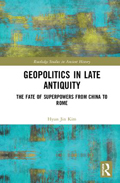
Kim, Hyun Jin. Geopolitics in Late Antiquity: The Fate of Superpowers from China to Rome. Routledge, 2018
Geopolitics in Late Antiquity explores the geopolitical revolution which shook the foundations of the ancient world, the dawning of the millennium of Inner Asian dominance and virtual monopoly of world power (with interludes) that began with the rise of the Huns and then continued under the hegemony of various other steppe peoples. Kim examines first the geopolitical situation created by the rise of Inner Asian powers, and then the reactions of the great empires of Eurasia to this geopolitical challenge. More information...

Parkin, Tim. "The Ancient Family and the Law," in Hopwood, Nick; Flemming, Rebecca and Kassell, Lauren (eds.,). Reproduction Antiquity to the Present Day. Cambridge University Press, 2018
From contraception to cloning and pregnancy to populations, reproduction presents urgent challenges today. This field-defining history synthesises a vast amount of scholarship to take the long view. Spanning from antiquity to the present day, the book focuses on the Mediterranean, western Europe, North America and their empires. It combines history of science, technology and medicine with social, cultural and demographic accounts. Ranging from the most intimate experiences to planetary policy, it tells new stories and revises received ideas. More information...
Vennarucci, R.G., Van Oyen, A, and Tol, Gis. "Una comunità artigianale nella Toscana rurale: il sito di Marzuolo," in Nizzo, V. and Pizzo, A. (eds.,). Antico e non antico. Scritti multidisciplinari offerti a Giuseppe Pucci. Mimesis Editions, 2018. More information...
2017

Kim, Hyun Jin. "Justin Martyr and Tatian: Christian Reactions to Encounters with Greco-Roman Culture and Imperial Persecution," in Poo, Mu-chou; Drake, H.A. and Raphals, lisa (eds.,). Old Society, New Belief: Religious transformation of China and Rome, ca. 1st-6th Centuries. OUP, 2017
This book brings together specialists in the history and religion of Rome and China with a twofold aim. First, it aims to show in some detail the similarities and differences each religion encountered in the process of merging into a new cultural environment. Second, by juxtaposing the familiar with the foreign, it also aims to capture aspects of this process that could otherwise be overlooked. This approach is based on the general proposition that, when a new religious belief begins to make contact with a society that has already had long honoured beliefs, certain areas of contention will inevitably ensue and changes on both sides have to take place. More information...
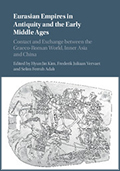
Kim, Hyun Jin; Vervaet, Frederik and Adali, Selim (eds.,). Eurasian Empires in Antiquity and the Early Middle Ages Contact and Exchange between the Graeco-Roman World, Inner Asia and China. Cambridge University Press, 2017
The great empires of the vast Eurasian continent have captured the imagination of many. Awe-inspiring names such as ancient Rome, Han and Tang China, Persia, Assyria, the Huns, the Kushans and the Franks have been the subject of countless scholarly books and works of literature. However, very rarely, if at all, have these vast pre-industrial empires been studied holistically from a comparative, interdisciplinary and above all Eurasian perspective. This collection of studies examines the history, literature and archaeology of these empires and others thus far treated separately as a single inter-connected subject of inquiry. It highlights in particular the critical role of Inner Asian empires and peoples in facilitating contacts and exchange across the Eurasian continent in antiquity and the early Middle Ages. More information...
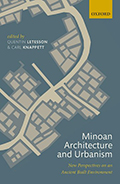
Hitchcock, L. and Maeir, A.M. "Lost in Translation: Settlement Organization in Postpalatial Crete, a View from the East," in Letesson, Quentin and Knappett, Carl (eds.,). Minoan Architecture and Urbanism: New Perspectives on an Ancient Built Environment. OUP, 2017.
Minoan Crete is rightly famous for its idiosyncratic architecture, as well as its palaces and towns such as Knossos, Malia, Gournia, and Palaikastro. Indeed, these are often described as the first urban settlements of Bronze Age Europe. However, we still know relatively little about the dynamics of these early urban centres. How did they work? What role did the palaces have in their towns, and the towns in their landscapes? More information...

Hitchcock, Louise. "Gender and Violence in Archaeology: Final Commentary," in Jensen, Bo and Matić, Uroš (eds.,). Archaeologies of Gender and Violence. Oxbow Books, 2017
Uroš Matić and Bo Jensen have brought together a team of both young and senior researches from many different countries in this first volume that aims to explore the complex intersection between archaeology, gender and violence. Papers range from theoretical discussions on previous approaches to gender and violence and the ethical necessity to address these questions today, to case studies dealing on gender and violence from prehistoric to early medieval Europe, but also including studies on ancient Egypt, Persia and Peru. More information...
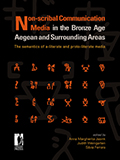
Davis, Brent and Valério, M. "Cypro-Minoan in Marking Systems of the Eastern and Central Mediterranean: New Insights into Old Problems," in Jasink, A.M., Weingarten, J. and Ferrara, S. (eds.,). Non-Scribal Communication Media in the Bronze Age Aegean and Surrounding Areas. Firenze University Press, 2017
This volume is intended to be the first in a series that will focus on the origin of script and the boundaries of non-scribal communication media in proto-literate and literate societies of the ancient Aegean. Over the last 30 years, the domain of scribes and bureaucrats has become much better known. Our goal now is to reach below the élite and scribal levels to interface with non-scribal operations conducted by people of the 'middling' sort. Who made these marks and to what purpose? Did they serve private or (semi-) official roles in Bronze Age Aegean society? The comparative study of such practices in the contemporary East (Cyprus, Anatolia, the Levant, and Egypt) can shed light on sub-elite activities in the Aegean and also provide evidence for cultural and economic exchange networks. More information...
2016
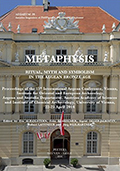
Hitchcock, Louise; Maeir, A. and Dagan, A. "Entangling Aegean Ritual in Philistine Culture," in F. Blakolmer et al (eds). Metaphysis: Ritual, Myth and Symbolism in the Aegean Bronze Age (Aegaeum). Peeters, 2016
In Aegean prehistory, questions of ritual behaviour and underlying 'metaphysical' beliefs have become a widespread and multifaceted field of research based on a large variety of methodological approaches. At the METAPHYSIS conference a large range of issues of ritual, myth and symbolism in the Aegean Bronze Age were addressed, such as ritual places and ritual landscapes, sacral and sepulchral rituals, social and political ceremonies, ritual acts and performances, the supernatural realm, liminality, irrationality and magic, mythology, hybrid creatures, heroes/heroines, divinities, symbols, emblems and iconography, images of power, and cosmology. Thus, METAPHYSIS was dedicated to the complex relationship between humans and 'the other' - the broad scholarly interface between a popular ritual belief and the cult of deities, ie religion in its proper sense. More information...
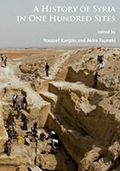
Jamieson, Andrew and Kanjou, J. "Tell Qumluq (Aleppo)," in Kanjou, Y. and Tsuneki, A. (eds). A History of Syria in One Hundred Sites. Archaeopress, 2016
This volume presents the long history of Syria through a jouney of the most important and recently-excavated archaeological sites. The sites cover over 1.8 million years and all regions in Syria; 110 academics have contributed information on 103 excavations for this volume. Based on these contributions the volume offers a detailed summary of the history of Syria, a history as important as any in terms of the development of human society. It is hoped that this knowledge will offer not only an increased understanding of the country but also act as a deterrent to the destruction of Syrian cultural heritage and facilitate the protection of Syrian sites. More information...
2015

Chong-Gossard, K.O. "Thais Walks the German Streets: Text, Gloss, and Illustration in Neidhart's 1486 German Edition of Terence’s Eunuchus," in Turner, A. and Torello-Hill, Giulia (eds.,). Terence between Late Antiquity and the Age of Printing. Koninklijke Brill NV, 2015.
Terence between Late Antiquity and the Age of Printing investigates the Medieval and Early Renaissance reception of Terence in highly innovative ways, combining the diverse but interrelated strands of textual criticism, illustrative tradition, and performance. The plays of Terence seem to have remained unperformed until the Renaissance, but they were a central text for educators in Western Europe. Manuscripts of the plays contained scholarship and illustrations which were initially inspired by Late Antique models, and which were constantly transformed in response to contemporary thought. The contributions in this work deal with these topics, as well as the earliest printed editions of Terence, theatrical revivals in Northern Italy, and the readership of Terence throughout the Early Middle Ages. More information...
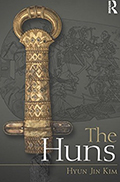
Kim, Hyun Jin. The Huns (Peoples of the Ancient World). Routledge, 2015
This volume is a concise introduction to the history and culture of the Huns. This ancient people had a famous reputation in Eurasian Late Antiquity. However, their history has often been evaluated as a footnote in the histories of the later Roman Empire and early Germanic peoples. Kim addresses this imbalance and challenges the commonly held assumption that the Huns were a savage people who contributed little to world history, examining striking geopolitical changes brought about by the Hunnic expansion over much of continental Eurasia and revealing the Huns' contribution to European, Iranian, Chinese and Indian civilization and statecraft. By examining Hunnic culture as a Eurasian whole, The Huns provides a full picture of their society which demonstrates that this was a complex group with a wide variety of ethnic and linguistic identities. More information...